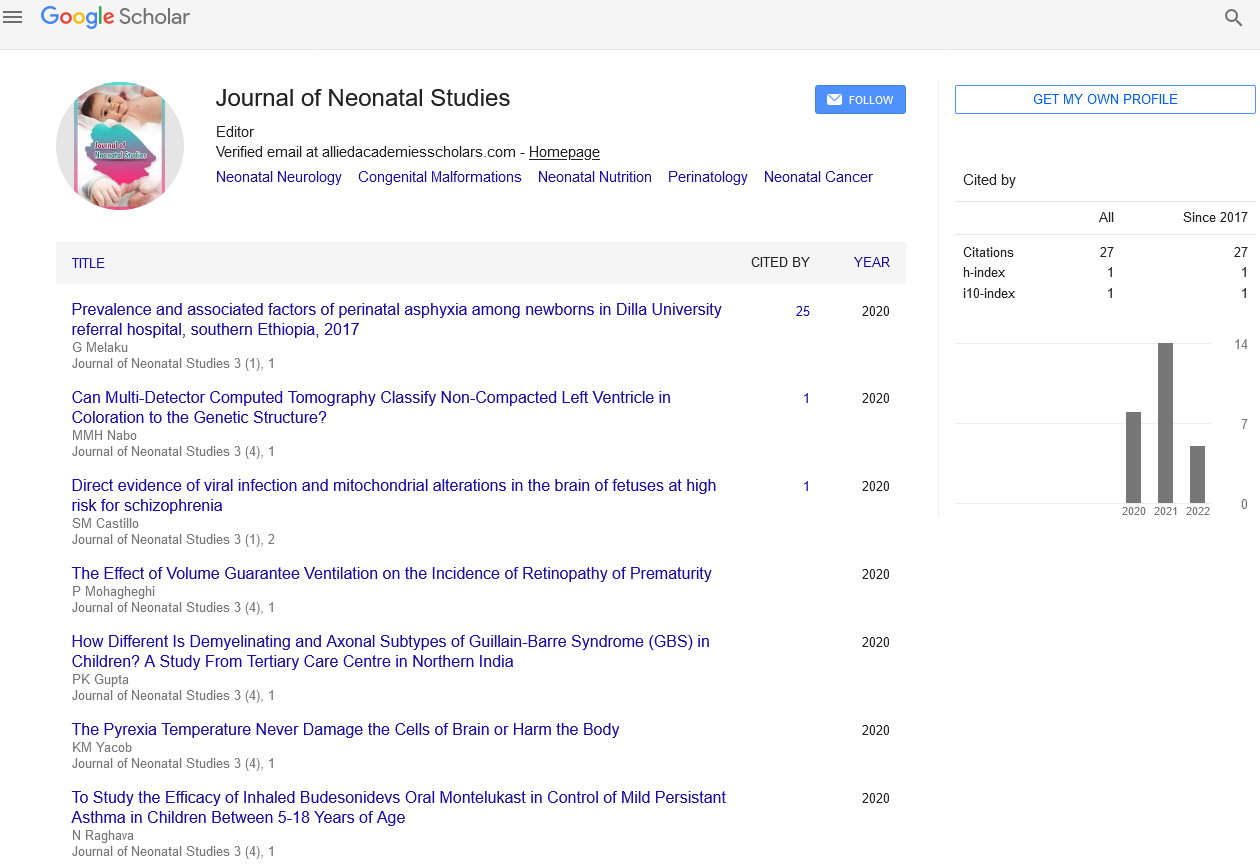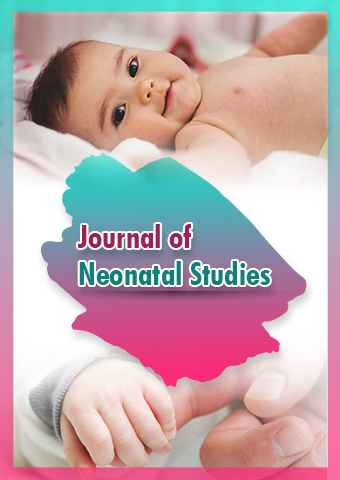Perspective - Journal of Neonatal Studies (2024) Volume 7, Issue 4
Cornelia de Lange Syndrome (CdLS) is a Rare Genetic Disorder that Affects in New Born
- Corresponding Author:
- John Matthew
Department of Neonatal Surgery, Oregon State University, USA
E-mail: john.matthew@oregonstate.edu
Received: 03-Jul-2024, Manuscript No. JNS-24-150486; Editor assigned: 05-Jul-2024, PreQC No. JNS-24-150486 (PQ); Reviewed: 19-Jul-2024, QC No. JNS-24-150486; Revised: 20-Aug-2024, Manuscript No. JNS-24-150486 (R); Published: 27-Aug-2024, DOI: 10.37532/JNS.2024.7(4).241-242
Introduction
Cornelia de Lange Syndrome (CdLS) is named after the Dutch pediatrician Cornelia de Lange, who first described the condition in 1933. It is a genetic disorder that occurs in approximately 1 in 10,000 to 1 in 50,000 live births. The syndrome is characterized by a variety of physical, cognitive, and behavioral traits that can vary widely in severity from one individual to another.
Description
Causes of Cornelia de Lange Syndrome (CdLS)
CdLS is caused by mutations in one of several genes, including NIPBL, RAD21, SMC3, HDAC8, and SMC1A. These genes are involved in the development of various body parts before birth, particularly the face, limbs, and other structures. Most cases of CdLS are not inherited but occur due to new (de novo) mutations in the affected genes. The severity of the condition can vary depending on the specific gene mutation and its location.
Symptoms and characteristics
Children with CdLS often exhibit a range of distinctive physical features and developmental delays. Some of the common symptoms include:
Distinctive facial features: Children with CdLS may have highly arched eyebrows that meet in the middle (synophrys), long eyelashes, low-set ears, a small upturned nose, and widely spaced teeth.
Growth delays: Slow growth before and after birth is common, leading to short stature and low birth weight.
Microcephaly: A smaller head circumference (microcephaly) is often observed in children with CdLS.
Hand and arm abnormalities: Malformations of the hands and arms, such as small hands, missing fingers, or forearms, are frequently seen.
Neurodevelopmental issues: Developmental delays range from mild learning disabilities to profound intellectual disabilities. Many children with CdLS also exhibit behavioral problems similar to autism spectrum disorder, including Attention-Deficit/Hyperactivity Disorder (ADHD) and anxiety disorders.
Gastrointestinal problems: Gastroesophageal Reflux Disease (GERD) and other gastrointestinal issues can cause feeding difficulties and contribute to slow growth.
Hearing and vision problems: Hearing loss and vision problems, such as nearsightedness (myopia), are common.
Excessive body hair: Hypertrichosis (excessive body hair) is another characteristic of CdLS.
Diagnosis and testing
Diagnosing CdLS involves a combination of clinical evaluation and genetic testing. A healthcare provider will assess the child’s physical features, developmental milestones, and medical history. Genetic testing can confirm the presence of mutations in the associated genes, providing a definitive diagnosis.
Management and treatment
While there is no cure for CdLS, early intervention and comprehensive care can significantly improve the quality of life for affected children.
Management strategies include:
Medical care: Regular monitoring and treatment of associated medical conditions, such as heart defects, gastrointestinal issues, and hearing problems, are essential.
Therapies: Physical, occupational, and speech therapies can help children with CdLS develop motor skills, communication abilities, and daily living skills.
Educational support: Individualized Education Plans (IEPs) and special education services can address the learning needs of children with CdLS.
Behavioral interventions: Behavioral therapy and support for managing autism spectrum disorder, ADHD, and anxiety can be beneficial.
Nutritional support: Ensuring proper nutrition is crucial for children with CdLS, especially those with feeding difficulties and slow growth.
Prognosis and outlook
With appropriate medical care and support, children with CdLS can lead fulfilling lives. The prognosis varies depending on the severity of the symptoms and the presence of associated medical conditions. Early diagnosis and intervention are key to achieving the best possible outcomes.
Conclusion
Cornelia de Lange Syndrome (CdLS) is a complex genetic disorder that affects multiple aspects of a child’s development. Understanding the causes, symptoms, and management strategies is essential for providing comprehensive care to affected children. With the right support and interventions, children with CdLS can thrive and lead meaningful lives.

